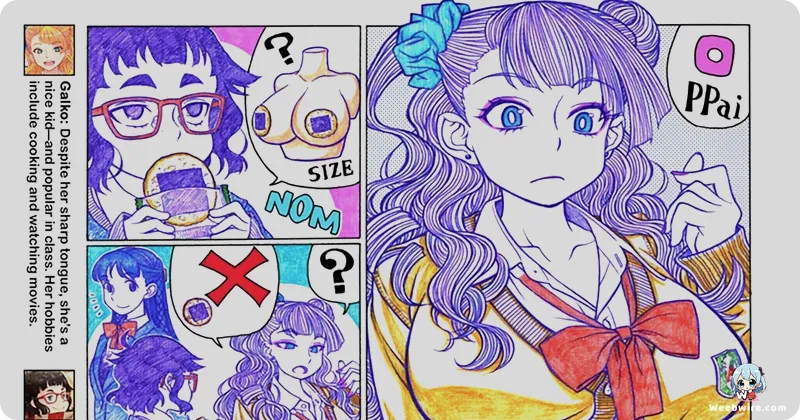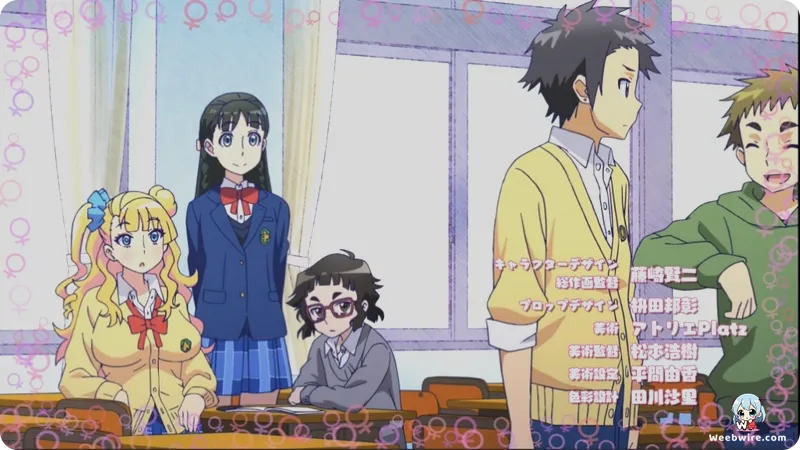Unmasking the Gyaru: How 'Please Tell Me! Galko-chan' Redefined Slice-of-Life Anime with Wit and Wisdom

In an anime landscape frequently dominated by grand narratives and fantastical escapism, the 2016 debut of Please tell me! Galko-chan (Oshiete! Galko-chan), produced by studio feel., emerged as a truly refreshing and profoundly insightful series. This short-form anime captivated audiences with its disarmingly simple yet brilliant premise: engaging, often uproarious, conversations among three high school friends. These friends are the iconic Galko, her sharp-witted best friend Otako, and the endearingly innocent Ojou. While its surface might suggest a straightforward slice-of-life comedy, a deeper exploration reveals a meticulously crafted narrative that far surpasses conventional genre expectations, brimming with clever design choices and fascinating insights.
Deconstructing Stereotypes with Wit and Charm
At its heart, Please tell me! Galko-chan masterfully deconstructs stereotypes and fosters genuine understanding. Galko, instantly recognizable by her striking blonde hair, distinctive 'gyaru' fashion, and prominent figure, frequently becomes the subject of playful, often mistaken, assumptions from her peers, especially Otako. Yet, the series consistently and charmingly subverts these preconceptions, unveiling Galko as a genuinely kind-hearted, surprisingly modest, and often endearingly naive individual. This dynamic forms the bedrock of the show's humor and its most compelling feature: a subtle, educational approach disguised as lighthearted banter.
Many episodes brilliantly feature Galko addressing curious, sometimes awkward, questions about her body, lifestyle, or universal female experiences, adeptly dispelling myths with candid, factual explanations. This seamless blend of pedagogy and comedy makes the series not just entertaining but genuinely informative.

From Web Manga to Celebrated Anime
Further adding to its allure is the series' fascinating origin story. Unlike countless anime adapted from established, long-running manga, Please tell me! Galko-chan began its life as a web manga. Its creator, Kenya Suzuki, initially published the series on the vibrant Japanese online art community pixiv, where it quickly amassed significant attention for its distinctive art style and remarkably relatable character interactions. This organic, grassroots popularity on a user-generated platform eventually propelled its serialization by Kadokawa Shoten, culminating in its celebrated anime adaptation. This journey from an obscure web comic to a fully animated series powerfully illustrates the impact of authentic appeal and a truly unique concept resonating broadly with a diverse audience.
The Brilliance of Short-Form Storytelling
The anime's distinctive short-form format is another cornerstone of its brilliance. Each episode of Please tell me! Galko-chan clocks in at approximately seven to eight minutes, including its opening and closing sequences. This concise runtime is not merely a production choice but an intrinsic element of its comedic timing and narrative precision. The abbreviated length necessitates each conversational segment to be sharp, focused, and exceptionally efficient in delivering both humor and information. It provides quick, highly digestible bursts of character interaction and trivia, making it an ideal watch for those seeking engaging entertainment without a significant time commitment. This format also significantly enhances its rewatchability, allowing viewers to easily revisit individual gags and profound insights.
Artistic Vision and Voice Acting Excellence
Kenya Suzuki's meticulously crafted character designs are equally compelling. Galko's exaggerated features, particularly her bust, serve more than just comedic purposes; they are central to the recurring themes of body image, societal perception, and the often-unspoken curiosities people hold about others. Otako's petite stature and glasses, alongside Ojou's refined yet delightfully ditzy demeanor, visually communicate their distinct personalities even before a single word is spoken. The animation studio feel. executed an exemplary job in translating Suzuki's unique artistic vision, characterized by its clean lines and wonderfully expressive faces, into fluid motion, faithfully preserving the manga's original charm and vibrant comedic energy.
The voice acting performances for the central trio are also remarkably noteworthy. Azumi Waki as Galko, Miyu Tomita as Otako, and Yuka Iguchi as Ojou deliver performances that are not only pitch-perfect but surprisingly nuanced, a testament to their skill given the brevity of each episode. For both Azumi Waki and Miyu Tomita, Please tell me! Galko-chan represented an early, significant role, powerfully showcasing their burgeoning talent and helping to solidify their careers within the industry. Their collective ability to infuse such depth and distinct personality into characters who primarily engage in dialogue is a profound testament to their artistry and the astute direction they received.
A Unique and Insightful Gem
In summation, Please tell me! Galko-chan transcends the boundaries of a mere quirky slice-of-life anime. It stands as a clever, subtly educational, and genuinely hilarious series, born from humble web manga beginnings. Its innovative short-form episodes, stereotype-challenging narrative, and unforgettable characters, masterfully brought to life by dedicated voice actors and faithful animation, offer a uniquely refreshing perspective on everyday conversations. These 'good to know' facets firmly establish its position as a truly unique and surprisingly insightful gem in the vast anime world, definitively proving that even the most casual of chats can harbor profound observations about human nature and the delightful, often absurd, journey of adolescence.
Credits
Please tell me! Galko-chan
Author
Kenya Suzuki
Cover Art
Kenya Suzuki
Studio
feel.
Publisher
Kadokawa Shoten
Producers





